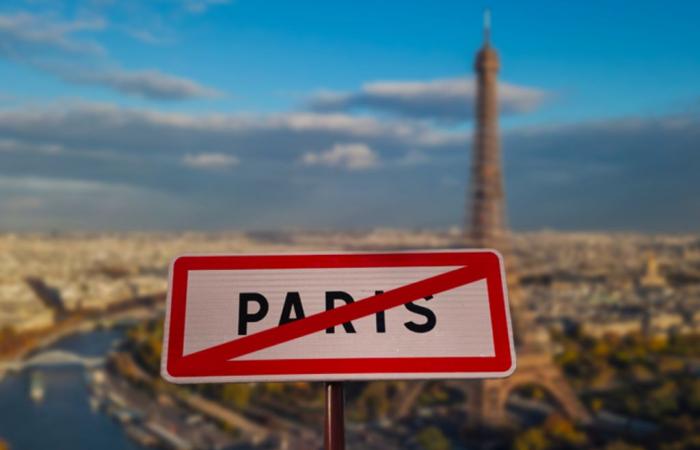
Will Paris continue to see its inhabitants leave? The decline in population in the densest capital in Europe, particularly marked over the past ten years, continues to shake up the Parisian political debate. The question returns this week to the heart of discussions at the Paris Council, where the local urban plan (PLU) which outlines the future of the city led by socialist mayor Anne Hidalgo will be put to a vote on Wednesday November 20.
Its ambition: to ensure that Paris remains livable by 2035-2040 by adapting it to global warming, and where it is still possible to find housing, in order to slow down the departures of the middle classes and families.
10,000 fewer inhabitants each year
For the past ten years, an average of 10,000 residents have left the capital each year, which today has nearly 2.1 million intramural residents – around 140,000 fewer than in 2013, according to figures from the 'Insee. And the trend is expected to continue. Depending on the scenarios, the population of Paris would be between 1.99 and 2.14 million inhabitants in 2040.
For the Parisian right, this ” leak ” partly signs the disavowal of a “unlivable urban planning” by too much “concreting”. “We no longer breathe in Paris. Over the last twenty years, three million additional square meters have been created in one of the densest cities in the world”castigates Pierre-Yves Bournazel (Horizons). A « surdensification » also criticized by David Alphand, co-president with Rachida Dati of the Changer Paris group. The right fears, for example, that the raising of buildings planned by the PLU will create « rues canyon » blocking air circulation. Another grievance: a housing policy that is penalizing in their eyes for middle-class families, due to a “imbalance” growing between social housing and private housing.
Read alsoHow Paris wants to reach 30% social housing, and why it risks being complicated
The housing fault?
The municipal executive responds that, on the contrary, “the city will never have invested so much” in the accommodation, a “good news for Parisians who need more social and affordable housing”according to Senator Ian Brossat, co-president of the communist group. The population decline has continued since the post-war period. “A fundamental trend long linked to an improvement in housing conditions”explains geographer Martin Omhovère of the Paris Region Institute to AFP.
“With the increase in comfort, cheap and overcrowded housing has been replaced by larger and more expensive housing”summarizes Jean-Christophe François, lecturer at Paris-Cité University. Many small dwellings where families were crowded together have merged, leading to a “dedensification” of habitat. Thanks to post-war renovations, neighborhoods like Belleville (north-east) went “from a staggering density to something more reasonable”, describes the geographer. “The disaffection of families for the center dates back to the end of the 1960s due to the rise in housing prices”he adds.
The demographic decline accelerated in the 2010s. A consequence of the fall in the birth rate at the national level? Only in part, because if we look at the scale of the metropolis, “Ile-de-France remains dynamic in terms of births”notes Martin Omhovère. The increase in divorces also played a role, as did the Covid crisis, even if “she only accelerated the trend”adds Jean-Christophe François.
Read alsoOne in ten homes affected: Paris wants to stop the proliferation of second homes
The problem of unoccupied housing
For these experts, the hemorrhage is mainly due to the explosion, since the 2010s, of so-called unoccupied housing (vacant housing, second homes and furnished tourist accommodation). A setback to the attractiveness of Paris, like London and New York. If the number of housing units has continued to increase since the mid-20th centurye century, the number of main residences continues to decrease, notes the Parisian Urban Planning Workshop (Apur).
Which contributes to the increase in prices and reduces the housing available for rental “which traditionally allow the reception of new arrivals”deciphers the Apur in its « Atlas of Paris ». “With the arrival of Airbnb, we lost 26,000 homes in the central districts”said Anne Hidalgo to AFP.
In line with municipal regulations to regulate the rental of second homes, the PLU wants to prohibit the creation of new spaces dedicated to Airbnb in the most touristy areas (Montmartre, Le Marais, etc.). But the room for maneuver remains narrow and the town hall expects a lot from the legislation. Ian Brossat, who welcomes the new regulatory measures for furnished tourist accommodation, now wants an increase in the tax on second homes, “today much too weak”. The city of Paris will present its plan “anti-Airbnb fight” on October 28.





